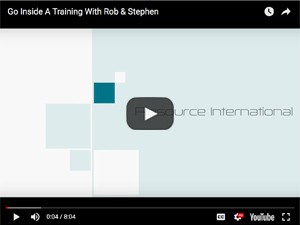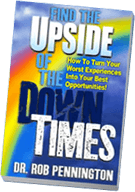All programs available virtually, using Zoom with breakouts for increased engagement and application.
Training
 I welcome you to this opportunity to transform the quality of your work and life. Please view my training video and then click on the “Get Access Now” button to get my free book & video and let’s get started helping you learn practical tools that make an impact today!
I welcome you to this opportunity to transform the quality of your work and life. Please view my training video and then click on the “Get Access Now” button to get my free book & video and let’s get started helping you learn practical tools that make an impact today!
Our customized trainings create a collaborative environment where participants work in-depth to address real work issues. Learning and applying practical tools increase productivity through an entertaining and enlightening experience.
Derived from our multi-day, award winning trainings (highest evaluations from ExxonMobil every year for 34 years!) Successful Work Relationships and Successfully Managing the Stress of Change the following 16 half day program topics and objectives (outlines upon request) provide an overview of the range and depth of our experiential, entertaining, engaging training experiences:
Topics and Objectives for 16 Management Modules
Month 1
1. Lead through a Balance of Authority and Collaboration (EQ & DiSC)
- Understand the difference between management authority & leadership influence.
- Enhance leadership influence with emotional intelligence development goals.
- Use the DiSC Profile to develop self-awareness of potential strengths and blind. spots, and to adjust one’s approach to respond to different personalities.
- Find non-threatening ways to approach others about sensitive issues.
- Manage friends and peers by setting boundaries; clarifying expectations around confidentiality and our changing roles and responsibilities.
2. Successfully Manage the Stress of Change
- Recognize the relationship between stress and change in order to be more effective in new and challenging situations.
- Apply techniques learned to managing the stress of supervising new reports, whether new hires or former peers.
- Know a list of practical techniques for providing regular support for stress management, and work in teams to schedule these moments throughout their regular day.
- Remain calm, positive and confident when faced with new and challenging circumstances.
3. Effectively Delegate Tasks and Responsibilities
- Use a structured model to delegate tasks and responsibilities, and in the process identify performance gaps and build development plans for direct reports.
- Clarify communication channels and levels of authority in decision making to provide the appropriate level of oversight.
4. The Martial Art of Communication
- Establish a foundation for respectful communication, especially when we disagree.
- Reduce other people’s defensiveness and resistance to your point of view.
- Overcome the majority of misunderstandings and disagreements.
- Communicate clearly in a way that builds understanding and commitment to agreed-upon action.
Month 2
5. Performance Management 1, Respectfully Hold People Accountability
- Set clear performance objectives that can be tracked.
- Monitor progress against the goals, ensure feedback, and address performance problems and issues promptly.
- Involve employees in setting positive expectations for tasks and work relationship behaviors.
- Make performance management an ongoing process, not a year-end event.
6. Turn Emotional Conflicts Into Success
- Stand firmly for your viewpoint while providing support and understanding for others.
- Provide productive feedback without blame that leads to productive results.
- Use a six-stage process to develop the skill of timing – when to listen, when to speak, how to reach consensus when possible and, when disagreements exist, how to build agreements that everyone will support.
7. Manage Time & Tasks
- Manage your time around activities that help you achieve your most important values and personal and professional priorities.
- Know how to focus your time on priorities of greater urgency and importance, and how to choose which tasks and responsibilities to delegate.
8. Coaching to Develop Potential
- Understand the difference between managing to achieve business results and coaching to develop professional and personal potential.
- Use a coaching template to help a peer build his or her own coaching improvement plan.
- Use a coaching template to create a plan for a direct report to develop a skill or competency.
- Choose from a selection of One-to-One templates to schedule monthly development sessions that tap into an employee’s internal motivation to achieve.
Month 3
9. Decision Making: Balancing Authority & Collaboration
- Give people latitude to make decisions in their own sphere of work.
- Clarify the appropriate levels at which stakeholders should be involved in various types of decisions.
- Know how to build team consensus when possible and implement authority decisions when necessary.
10. Lead A High-Performing, Learning Culture (DiSC Team)
- With feedback from the DiSC profiles, discuss dynamics of how our leadership influences the culture at your organization, and what we can do to build a culture that combines high performance with continual learning.
11. Review Application of Programs 1-10
- Review and reflect on:
1. Situations where you have used what you have learned without effort.
2. Situations where you have used what you learned but it took effort
3. Situations where nothing worked, whatever you tried to apply what you learned didn’t make any difference.
- Q&A on deeper understanding and/or application of previously learned materials
- Identify one thing on which to focus that could make the most difference for you in addressing your biggest leadership challenges.
12. Decision Making: Decision Making & Problem Solving Analysis
- Understand basic thinking pattern behind making choices
- Know the five major elements of decision making
- Use a methodical, systematic process of Decision Analysis to (1) draft a Decision Statement, identify the Decision Objectives, classify the Musts and Wants, measure the Alternatives vs. the objectives, clarify the Consequences of the Choice, and produce the best decision possible based on the available information.
Month 4
13. Turning Worries Into Action Plans
- Work with a four-step process to turn a worry into a positive action plan
- Use this four-step process to coach direct reports to have confidence in the face of challenging circumstances.
- Follow a six-step process for building any new habit to accomplish professional or personal goals.
14. Performance Management 2: Appraisal/Assessment
- Provide feedback to employees on prior year performance for the purpose of improving future performance and skills.
- Align employee goals with department level goals.
- Identify performance and skill gaps to be addressed through work assignments and/or training.
- Identify training and resources needed to fulfill goals and objectives.
- Provide management with performance information to fairly reward employees through compensation programs.
15. Coping Resources for Maintaining High Performance at Work and Home
- Complete the Coping and Stress Profile to provide valuable feedback on stress and coping in four interconnected areas of life: Personal, Work, Couple, and Family. The profile uses an engaging process of personal learning to:
• Provide critical insight into how stress in one area of life impacts other areas
• Examine how coping resources in one area can be used to decrease stress in another, and,
• Reveal the relationship between stress, coping resources, and overall satisfaction
- Identify best practices for building a high-performance culture balanced with a meaningful personal lifestyle.
16. Change Management: The Missing Piece in Project Management
- Improve participant’s abilities to build support for innovation and organizational changes needed to improve the organization’s effectiveness.
- Help individuals and teams manage any anxiety associated with significant change.
- Assess employee’s readiness to understand and apply changes in processes, procedures, or new initiatives.
- Understand how to structure messages about organizational changes that reduce the natural apprehension about change and engage employees to adopt required changes.
- Have a positive impact on the human factors that affect ROI:
a. Speed of adoption: how quickly they make the change
b. Ultimate utilization: how many of them make the change
c. Proficiency: how effective they are after making the change
Common themes repeatedly addressed throughout modules include:
- How to earn respect and build trust.
- How to create a culture in which it is safe for employees to let us know when there is a problem or they don’t know or understand something, without them feeling judged negatively.
- The challenges of being an objective authority figure and being friendly.
- How to communicate empathy and still maintain expectations.
- How to respond to people who are defensive and resistance.
- How to keep people on task without being harsh.
- How to respond constructively when others are defensive when you give them challenging feedback.
- Know when to take action and when to consult an authority figure for input.
- How to “gel” together as we continue to grow as leaders at our organization.
Rob’s life changes lives. Click book for more information. 
Get a FREE Manual and Video on how you can…

Read more…
What people have said about the value of our trainings
- I have heard several of the top speaker/trainers but I have never heard any speaker be so thorough and generous. None gave me as much information as I received in your first session. Every time you spoke, I was riveted by everything you said. You are an excellent teacher. Thank you so much!
- Thank you for providing more content, material, and value than I’ve seen in most presentations.
- Thank you for your generosity and excellence in sharing such rich and helpful information! Just what I needed to be more proactive!
- I discover my strengths and weaknesses and turn the weaknesses into a positive
- effect of thoughts, emotions and behaviors on the results in my life
- learning the value of having requirements in a relationship
- understanding my self more
- learning the ability to recognize and deal with different situations
- changing myself by being more adaptable/flexible
- learned more about myself, my supervisor and spouse
- instructor teaching style – vibrancy
- concept of “they love me but sometimes they don’t realize it”.
- moving through the dreaded “cycle of conflict”
- reminder not to take it personally!
- I’m going to pay more attention to my spouse
- how my personal behavior affects my relationships
- the process of feeling uncomfortable, making a negative judgment, taking it personally and reacting unconsciously
- importance of avoiding my own resistant responses that reinforcing negative behavior in others
- how to relate to others on the job and in my personal life
- knowing that nothing is personal
- why we feel uncomfortable and what to do about it
- what I am going through others are going through as well
- misunderstandings can be better worked out when we are patient and courteous
- accepting that people think and act differently
- people may not be ignoring me but need time to think
- learning and being reminded about effective techniques for communication
- 3 questions that reduce misunderstanding
- how you behave is based upon your beliefs/opinions
- how someone responds to me always tells me more about them
- knowing how to approach different personality types
- understanding my blind spots and how they affect relationships
- how people feel uncomfortable and get negative feelings when you say
- things they don’t agree with
- not to take differences personally

